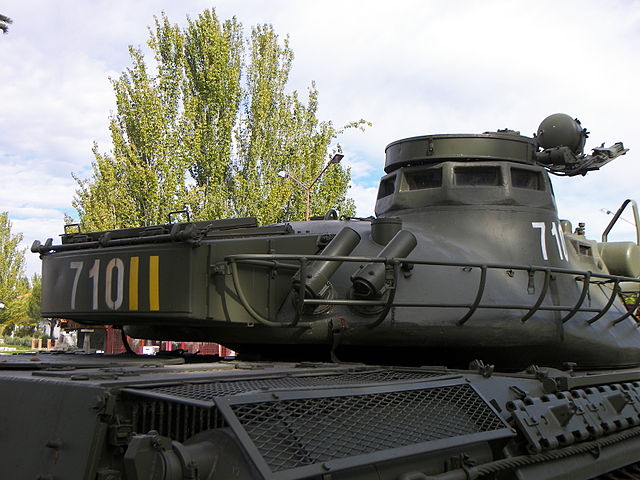The Lince was a Spanish development programme for a proposed main battle tank that unfolded during the late 1980s and early 1990s. The intention was to replace the M47 and M48 Patton tanks that the Spanish Army had received under the U.S. Mutual Defense Assistance Act between 1954 and 1975, and to complement the AMX-30E tanks manufactured for the army during the 1970s. Companies from several nations, such as German Krauss-Maffei, Spanish Santa Bárbara, and French GIAT, made bids for the development contract. The main priorities were mobility and firepower, with secondary priority placed on protection; the Lince tank was to have been lighter and faster than its competitors. To achieve a sufficient level of firepower and protection, the Lince was to use Rheinmetall's 120 mm L/44 tank-gun and German composite armour from the Leopard 2A4.
Mock-up of the German-Spanish Lince
A Spanish M47 Patton. Despite being completely obsolete, serving practically nothing more than for instruction, the M-47s were for decades the most numerous tanks in the Spanish arsenal.
The Lince programme was meant to complement Spain's fleet of AMX-30Es, such as the one pictured.
Due to the cancellation of the Lince, Spain opted to procure 219 Leopard 2Es in the late 1990s.
The AMX-30E (E stands for España, Spanish for Spain) is a Spanish main battle tank based on France's AMX-30. Although originally the Spanish government sought to procure the German Leopard 1, the AMX-30 was ultimately awarded the contract due to its lower price and the ability to manufacture it in Spain. 280 units were manufactured by Santa Bárbara Sistemas for the Spanish Army, between 1974 and 1983.
An AMX-30E on display at the Museum of Armored Vehicles of El Goloso, in Spain
Front view of an AMX-30E
An AMX-30E in the Museographic Collection of the Spanish Legion in Almería
Close-up of the AMX-30E's turret bustle, grenade launchers and commander's hatch







